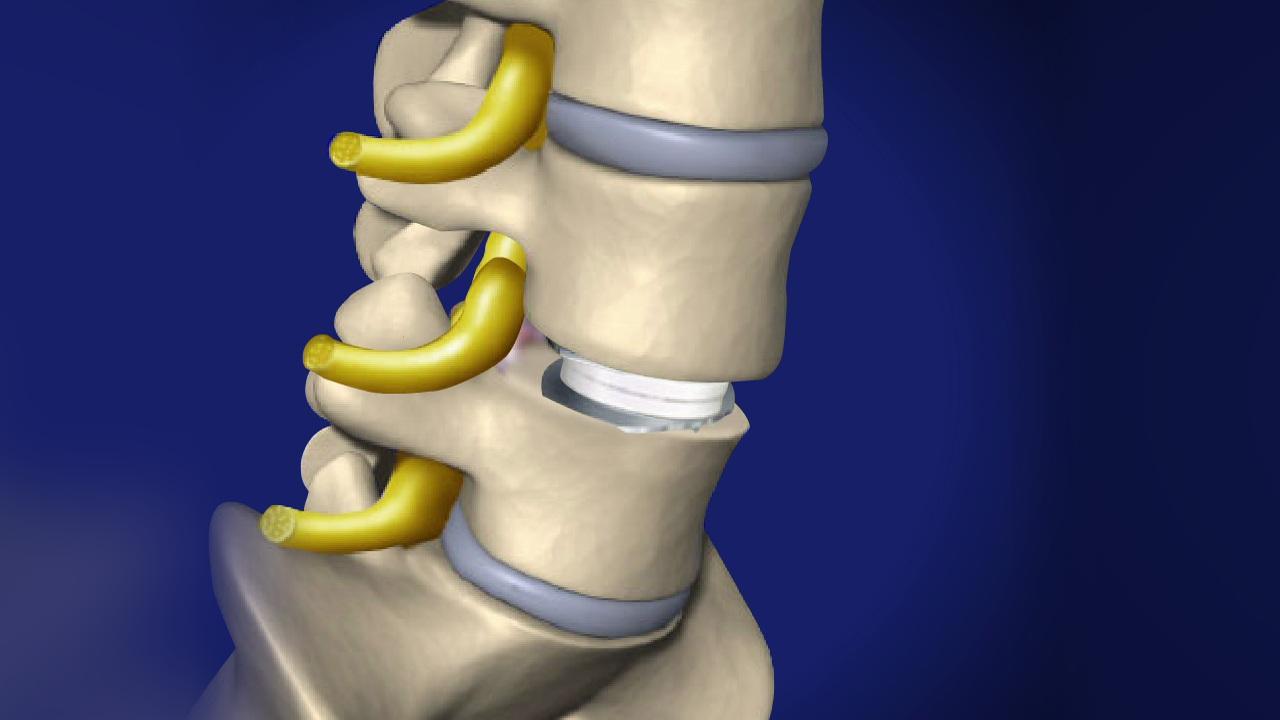Back pain is a debilitating condition that affects millions of people worldwide. Conventional treatment options such as medication, physical therapy, and surgery often provide limited relief. However, a revolutionary new option known as artificial discs is helping chronic back pain sufferers get their lives back. Artificial discs provide an innovative alternative to fusion surgery that preserves spinal movement.
What are Artificial Discs?
Artificial discs, also known as lumbar disc replacements, are man-made implants that are surgically placed between vertebrae in the spine to replace damaged discs. The human spine consists of 24 movable vertebrae separated and cushioned by intervertebral discs. These discs act as shock absorbers and allow the spine flexibility. When discs degenerate or deteriorate due to injury or age, they lose their cushioning ability which can cause severe back pain.
Traditionally, spinal fusion surgery has been used to treat damaged discs which involves fusing two or more vertebrae together with bone grafts and metal hardware. While this eliminates pain by preventing painful movement at the problem level, it also prohibits natural bending and twisting at that section of the spine. Artificial discs offer an innovative alternative that preserves spinal motion and structure. These implants are comprised of components like endplates which attach to vertebrae and a polymeric core that acts as a cushion between them.
Types of Artificial Discs
There are currently three main types of artificial discs available for use:
- Metal-on-Metal Discs: Early Artificial Disc designs featured metal ball-and-socket components made of cobalt-chrome or titanium alloys. While effective, concerns about metal wear debris led to newer designs.
- Metal-on-Polyethylene Discs: The second generation uses a metal shell with a polyethylene or plastic insert in the core. This isolates the metal parts from direct articulation and reduces wear particles. Popular brands include ProDisc-L and Maverick.
- Biocompatible Polymeric Discs: The latest discs are made entirely from biocompatible plastics or polymers like polycarbonate urethane with no metal components. Examples are the Flexicore from Anthropic and the M6-C from NuVasive. These materials withstand loads while reducing friction and wear for improved longevity.
Surgical Procedure
An artificial disc replacement surgery typically takes 1-2 hours to complete. Through a small incision in the lower back, the damaged disc is removed while preserving surrounding bone and ligaments. Endplates matching the patient's anatomy are then placed between the vertebrae and affixed in place. A polymer core is inserted in between the endplates to cushion the spine during movement. Patients usually spend one night in the hospital before being discharged.
Recovery & Benefits
After surgery, it takes around two months to heal fully. During this period, patients go through gentle physical therapy exercises to help strengthen muscles while the incision heals. Once recovered, artificial disc recipients enjoy several benefits compared to spinal fusion:
- Preserved Spinal Mobility: The disc implant allows natural bending and flexibility at the treated level versus a stiff fused segment.
- Less Adjacent Level Degeneration: Fusion shifts stress to nearby discs increasing their wear over time. Discs help share load more evenly.
- Faster Recovery: Disc replacement allows quicker return to normal activities versus fusion which involves bone grafts and longer healing.
- Improved Longevity: Clinical studies show discs maintain function for 20+ years versus decreased fusion outcomes over decades.
- Better Pain Relief: Pain is relieved by restoring proper lumbar biomechanics and shock absorption versus indirect pain relief from fusion.
patient acceptance of artificial disc technology is growing rapidly due to their demonstrated effectiveness in treating discogenic low back pain. Carefully selected candidates can experience lasting relief while maintaining an active lifestyle.
Outcomes and Safety
Several long-term clinical studies provide strong evidence that artificial discs successfully reduce back and leg pain with outcomes equaling or exceeding fusion surgery. While all surgeries carry risks, disc surgeries compare favorably to fusion with lower risks of complications:
- Disc replacement has shown reoperation rates under 10% at 10 years versus over 25% for some fusion techniques according to randomized controlled trials.
- Adjacent level degeneration requiring further surgery occurs in only 5-10% of disc recipients versus over 30% after fusion over the long haul.
- Major complications are very rare at 1-3% risk for both procedures. However, the risk of neurological injury, blood clots and infections tends to be lower for discs.
Overall, over 20 years of clinical use and improved biomaterial designs have demonstrated the safety and durability of artificial discs. When implanted by high-volume surgeons in properly selected cases, patient satisfaction exceeds 90% with most resuming their normal pre-injury activities.
Artificial lumbar discs represent a major advance beyond spinal fusion for carefully chosen patients with back pain from severely damaged discs. By restoring natural spinal mechanics and motion, discs have been shown to provide superior long-term clinical outcomes including less adjacent level degeneration and reoperation rates. As materials science further refines disc designs and our understanding of which patients benefit most increases, this minimally invasive option will undoubtedly help many more people reclaim active, pain-free lives. For chronic back pain sufferers who have failed other treatments, an artificial disc should certainly be considered before accepting the limitations of spinal fusion surgery.
Get more insights on- Artificial Discs
